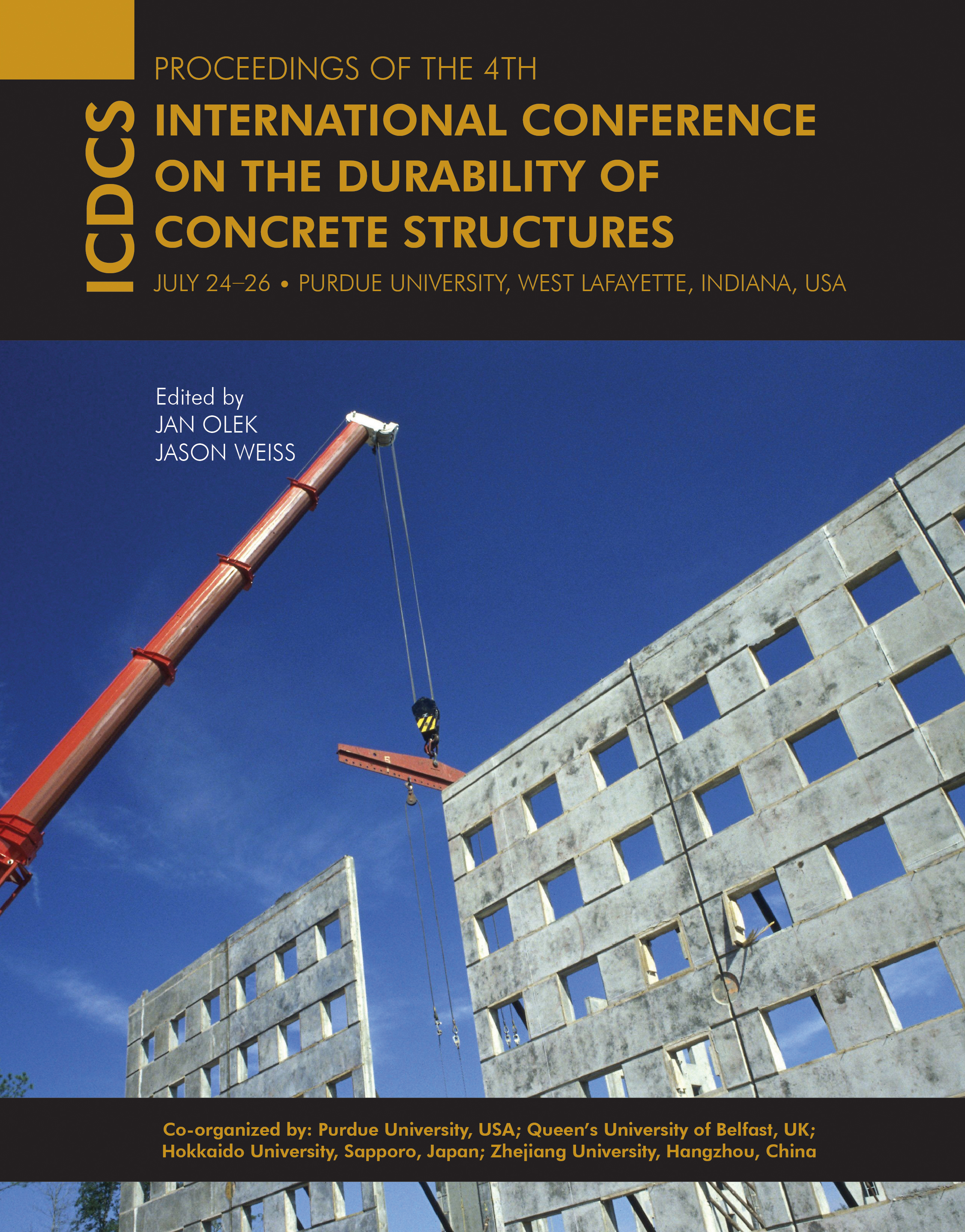Abstract
A nondestructive integrated CT-XRD method has been developed and used to study hydrated cement system. In this research, a beam line (BL) at the third-generation synchrotron radiation facility, SPring-8, in Japan, was used. First, X-ray computed tomography (CT) was employed to obtain three-dimensional (3D) images and select a region of interest (ROI) in a given plane section of the hardened cement paste. Then, X-ray diffraction analysis (XRD) was conducted on the specified region. These operations were implemented in situ without the removal of specimen from the stage inside the BL. The hardened cement paste was precracked and then leached by continuous water flow through the specimen, and the integrated CT-XRD method was conducted before and after the leaching test. In this way, the change in the hydrated cement system was characterized over time using the same specimen. CT observation provides the location of cracks and air voids as well as high and low density substances present in the hydrated cement system. ROI is arbitrarily determined at a set of coordinates at which one likes to evaluate the change in the cement system using XRD. This newly developed technique enables the evaluation of the presence of calcium hydroxide (portlandite) over time and space.
DOI
10.5703/1288284315415
Included in
Nondestructive Integrated CT-XRD Method for Research on Hydrated Cement System
A nondestructive integrated CT-XRD method has been developed and used to study hydrated cement system. In this research, a beam line (BL) at the third-generation synchrotron radiation facility, SPring-8, in Japan, was used. First, X-ray computed tomography (CT) was employed to obtain three-dimensional (3D) images and select a region of interest (ROI) in a given plane section of the hardened cement paste. Then, X-ray diffraction analysis (XRD) was conducted on the specified region. These operations were implemented in situ without the removal of specimen from the stage inside the BL. The hardened cement paste was precracked and then leached by continuous water flow through the specimen, and the integrated CT-XRD method was conducted before and after the leaching test. In this way, the change in the hydrated cement system was characterized over time using the same specimen. CT observation provides the location of cracks and air voids as well as high and low density substances present in the hydrated cement system. ROI is arbitrarily determined at a set of coordinates at which one likes to evaluate the change in the cement system using XRD. This newly developed technique enables the evaluation of the presence of calcium hydroxide (portlandite) over time and space.





